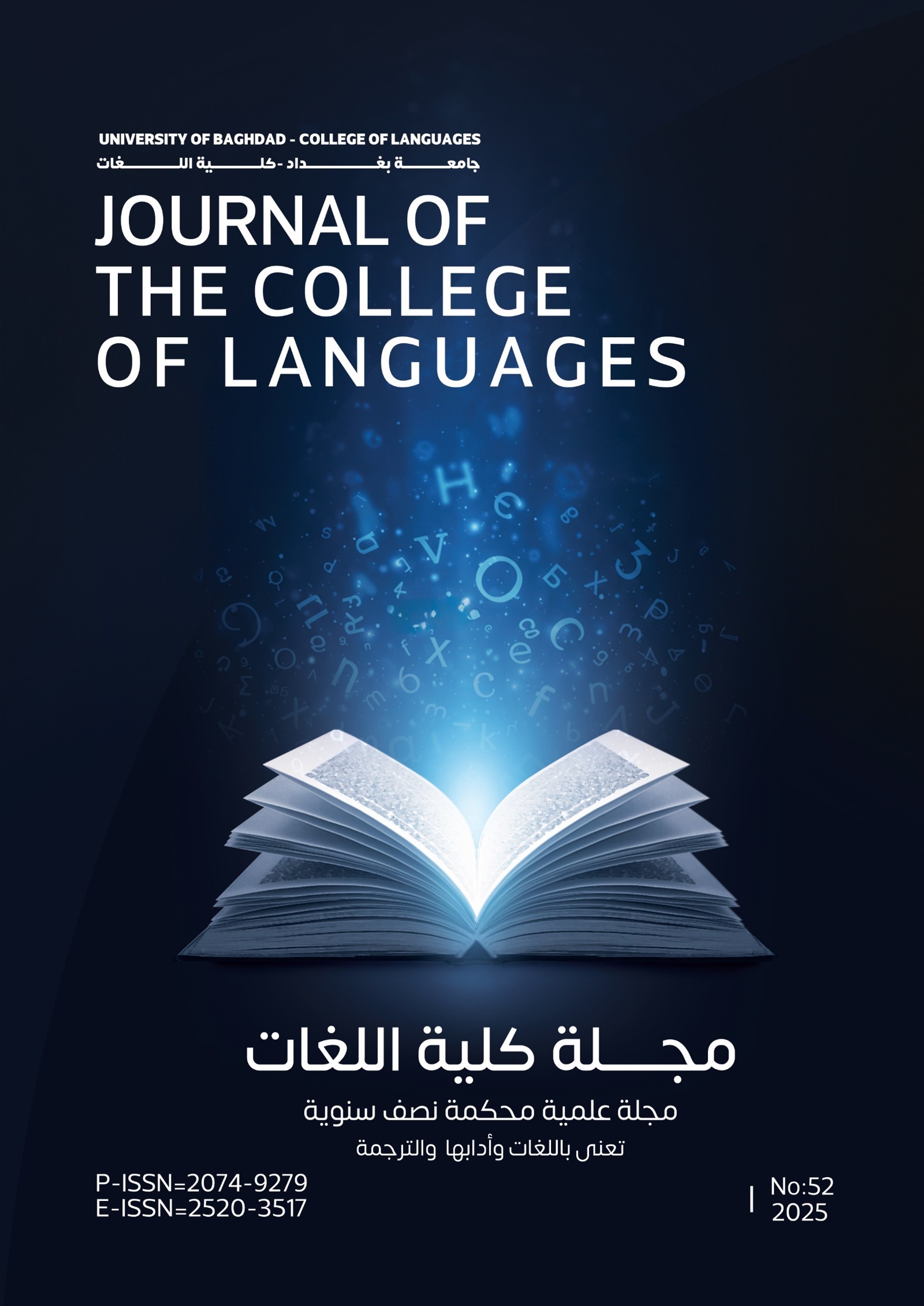Free will between Slavery and Freedom: A Study of Linda Brent in Incidents in the Life of a Slave Girl by Harriet Jacobs
DOI:
https://doi.org/10.36586/jcl.2.2022.0.46.0044Keywords:
black female writer, Du Bois, Harriet Jacobs, resistance, slaveryAbstract
Harriet Jacobs was a writer and a reformer. As a female writer in the nineteenth century, Jacobs wrote her narrative as a means of resisting the system of slavery. She wrote her book Incidents in the Life of a Slave Girl: Written by Herself, (1842) to reflect upon the exploitation of the black people and the need to change the hierarchal attitude that governs white/black relations. She was engaged in many abolitionist events and her anti-slavery approach appeared clearly in her writings. She shares Du Bios ideas about freedom and emancipation and the need for a political and cultural change. Thus, Du Bois’s theory provides a framework for her autobiographical novel where she portrays Linda Brent, the main character, a strong willed lady whose path to freedom came after an agonizing journey. Despite differences in cultural status and upbringing, both of Jacobs and Du Bois go from a subjective representation of a personal experience to an objective statement about the general conditions of black people in slavery, and the discrimination black people face during their lives. To Jacobs, freedom is a choice a person has to fight for, and a mental process that is accomplished through resistance and protest. Her strategies of resistance came through three points in the novel; the family, who helped her through her journey; pregnancy and the choice of the father of her kids; and finally motherhood and the promise of a better future for her children. This paper concludes that Jacobs’s novel is a narrative antecedent for slaves’ voices and a reclamation of identity after slavery.
References
-Braxton, J. (1988). Black Women Writing Autobiography, 206; and Elizabeth Fox- Genovese, Within the Plantation Household: Black and White Women of the Old South. Chapel Hill: The University of North Carolina Press.
-Berlant, L. (1978). "The Queen of America Goes to Washington: Harriet Jacobs, Frances Harper, Anita Hill," in Feminisms, ed. Robyn R. Warhol and Daine Price Herndl. Ithaca: Cornell University Press.
- Daniels–Rauterkus, M. (2019). “Civil Resistance and Procreative Agency in Harriet Jacobs’s Incidents in the Life of a Slave Girl”. Women's Studies. 48:5, 498-509, DOI: https://doi.org/10.1080/00497878.2019.1628758
-Davis, A. (1981). Women, Class, and Race. New York. Random House.
-Du Bois, W. E. B. (1897). “Strivings of the Negro People”. August. The Atlantic.https://www.theatlantic.com/magazine/archive/1897/08/strivings-of-the-negro-people/305446/
----------------------. (2006). The Souls of Black Folks. The Electronic Classics Series. Hazelton: Pennsylvania State University. Available at https://christopherreid.weebly.com/uploads/2/8/6/6/28661415/soul_of_black_fold_bubois.pdf
---------------------. (1965). The World and Africa: An Inquiry into the Part Which Africa Has Played in World History. New York: International Publishers.
-Foreman, P. G. (1990). “The Spoken and the Silenced in Incidents in the Life o f a Slave Girl and Our Nig." Callaloo. (13)2. 313-324.
-Gilmore, L. (1994). Autobiographics: A Feminist Theory of Women's Self-Representation. Ithaca and London. Cornell University Press.
-Ithawi, H. N. H. (2021). “Violence/Accommodation Binary in Chesnutt’s The Marrow of Tradition”. Arab World English Journal for Translation &Literary Studies 5 (2). 49-61 DOI: http://dx.doi.org/10.24093/awejtls/vol5no2.4
-Jacobs, H. (2015). Incidents in the Life of a Slave Girl. New York. Barnes & Noble, Inc.
-Kreiger, G. (2008). “Playing Dead: Harriet Jacobs's Survival Strategy in "Incidents in the Life of a Slave Girl.”. (42)¾. 607-621. https://www.jstor.org/stable/40301257
-Li, S. (2006). “Motherhood as Resistance in Harriet Jacob’s Incidents in the Life of a Slave girl”. University of Nebraska Press. (23)1. https://www.jstor.org/stable/25684492
-Morgan, J. (2004). Laboring Women: Reproduction and Gender in New World Slavery. Philadelphia: University of Pennsylvania Press.
-Shaalan, B. S. (2020). “A Psychological Reading of the Problem of the Black in John Steinbeck’s Of Mice and Men”. Journal of the College of Languages. (41) 69-81. https://www.iasj.net/iasj/download/507f2f941b2be042.
- White, D. G. (1999). Ar’N’t I A Woman? New York. W.W. Norton & Company.
-Yellin, J. F. (2004). Harriet Jacobs: A Life. New York: Basic Civitas Books.
------------------------. (2000). Introduction to Incidents in the Life of a Slave Girl, by Harriet Jacobs. Cambridge: Harvard University Press.
Downloads
Published
Issue
Section
License
Copyright (c) 2022 Journal of the College of Languages (JCL)

This work is licensed under a Creative Commons Attribution 4.0 International License.








